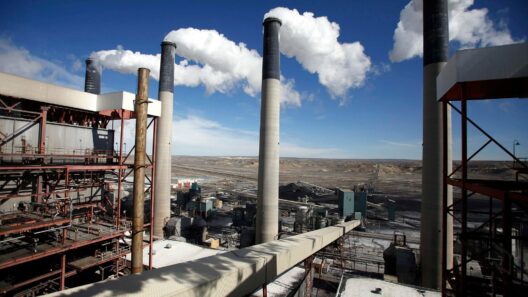Global warming represents one of the most formidable challenges faced by humanity today. As greenhouse gas emissions accumulate in the atmosphere, the urgency to mitigate these effects has escalated. The question looms large: can we stop global warming before it’s too late? This inquiry beckons an examination of our current trajectory, innovative solutions, and the concerted efforts needed to forge a sustainable future.
To comprehend this ominous phenomenon, we must first grasp the mechanisms driving climate change. The rise in global temperatures correlates directly with increased concentrations of carbon dioxide (CO2) and other greenhouse gases in the atmosphere, primarily stemming from the combustion of fossil fuels. This anthropogenic impact results in rising sea levels, aberrant weather patterns, and profound ecological disruptions that threaten biodiversity and human livelihoods alike.
The dire predictions issued by climate scientists signal a potential tipping point—an irreversible cascade of climatic shifts that could unfold within decades. Recent studies suggest that we may have even less time to halt this alarming trajectory than previously thought. This urgency compels us to scrutinize our collective inertia toward change and to galvanize action across all sectors of society.
Central to the discourse surrounding global warming is the acknowledgment of its complexities, including socio-economic factors that underpin our reliance on fossil fuels. Industrialized nations, with their historic contributions to greenhouse gas emissions, face ethical imperatives to lead the charge in reducing their carbon footprints. However, developing countries, grappling with economic growth and energy needs, present challenges in balancing progress and sustainability.
Yet, amidst this grim landscape, there lies a reservoir of hope. Advances in renewable energy technologies illuminate a path forward. Solar, wind, and hydroelectric power present viable alternatives to fossil fuels, progressively entrenched in the global energy mix. Investment in these technologies can not only reduce emissions but also foster job creation, stimulate economic growth, and enhance energy security.
Furthermore, innovation plays a pivotal role in combating climate change. Carbon capture and storage (CCS) technologies offer the tantalizing prospect of directly removing CO2 from the atmosphere. While still in nascent stages, continuous research and development may soon yield scalable solutions, transforming the way industries operate and significantly curtailing emissions. Such technologies, however, require significant investment and policy support to ensure their viability.
Public awareness and education also form cornerstone elements of climate action. As citizens become more informed about the ramifications of inaction, the impetus for change intensifies. Grassroots movements proliferate, advocating for systemic reforms, urging governments to adopt stringent climate policies, and mainstreaming sustainability into the public consciousness. Consumer choices increasingly reflect ecological considerations, compelling businesses to adopt greener practices to remain competitive.
Inspiring systemic change necessitates a multifaceted approach, particularly through policy interventions at local, national, and international levels. The Paris Agreement exemplifies a global commitment to limit temperature rise to well below 2 degrees Celsius above pre-industrial levels. However, to achieve these targets, nations must ramp up their ambitions, transitioning away from coal dependency and embracing a sustainable energy future.
Moreover, the role of afforestation and reforestation cannot be overstated. Trees serve as natural carbon sinks, absorbing CO2 from the atmosphere and fostering biodiversity. Large-scale planting initiatives not only mitigate climate change impacts but also rehabilitate ecosystems, enhancing biodiversity and resilience against climatic extremes. Such nature-based solutions serve dual purposes: combatting climate change while nurturing ecological health.
In addition, advancements in agricultural practices present another cog in the wheel of climate mitigation. Regenerative agriculture, incorporating practices such as crop rotation and organic farming, can sequester carbon in soils while enhancing food security. Transitioning to sustainable agriculture requires rethinking food systems, minimizing waste and promoting local, seasonal consumption to reduce transport emissions. The interconnectedness of our food choices with environmental consequences underscores the necessity for holistic reforms.
The potential for change, however, is not uniformly distributed. Vulnerable populations, often the most affected by climate impacts, frequently possess the least capacity to adapt. Therefore, ensuring equity in climate action is essential. Climate justice movements emphasize the need for inclusive dialogue that prioritizes marginalized voices in decision-making processes. Addressing historical inequalities through equitable climate policies fosters resilience and mobilizes broader support for climate initiatives.
As individuals, we also possess a role in reversing the tide of climate change. Simple lifestyle changes, from reducing energy consumption to embracing sustainable transportation options, accumulate into significant impacts when practiced collectively. Advocating for policy reforms at local government meetings, supporting eco-friendly businesses, or participating in community clean-up efforts can unleash a collective force for change.
The question ultimately remains: can we stop global warming before it’s too late? The answer lies within us—our choices, our will, and our vision for the future. We stand at an inflection point, a convergence of necessity and opportunity. The time to act decisively is now; our planet’s future depends upon our ability to rethink, innovate, and commit to a sustainable trajectory.
In conclusion, the challenges posed by global warming demand unified action across multiple fronts—from technological innovations and systemic policy shifts to individual conduct and collective advocacy. The stakes are monumental, and while the path ahead is fraught with uncertainty, the potential for transformative change remains within our grasp. Embracing this responsibility could lead us to a healthier planet, a stable climate, and a sustainable legacy for generations yet to come.







